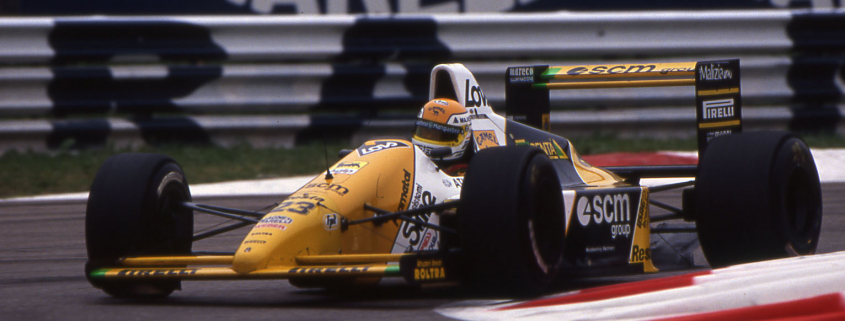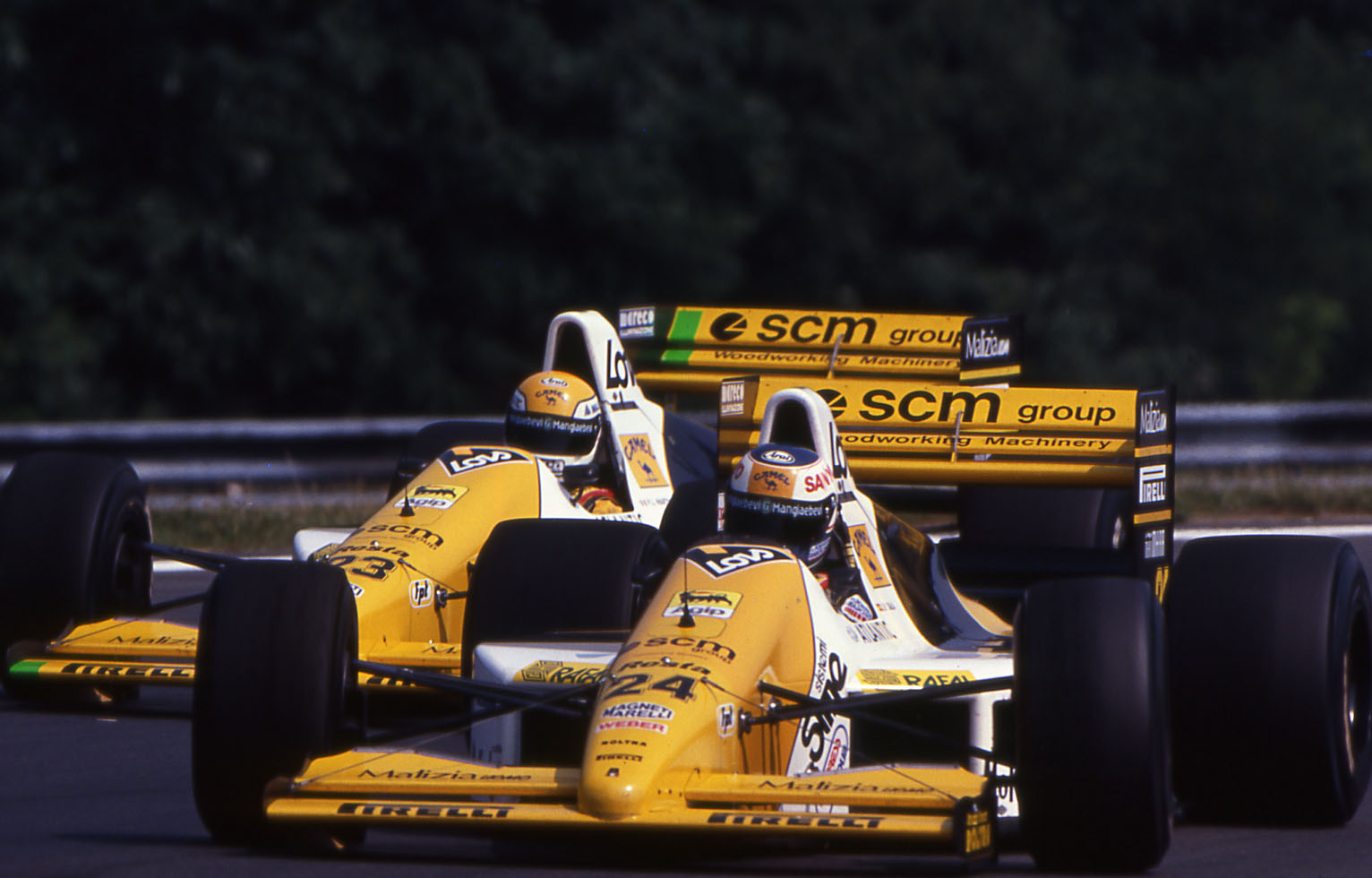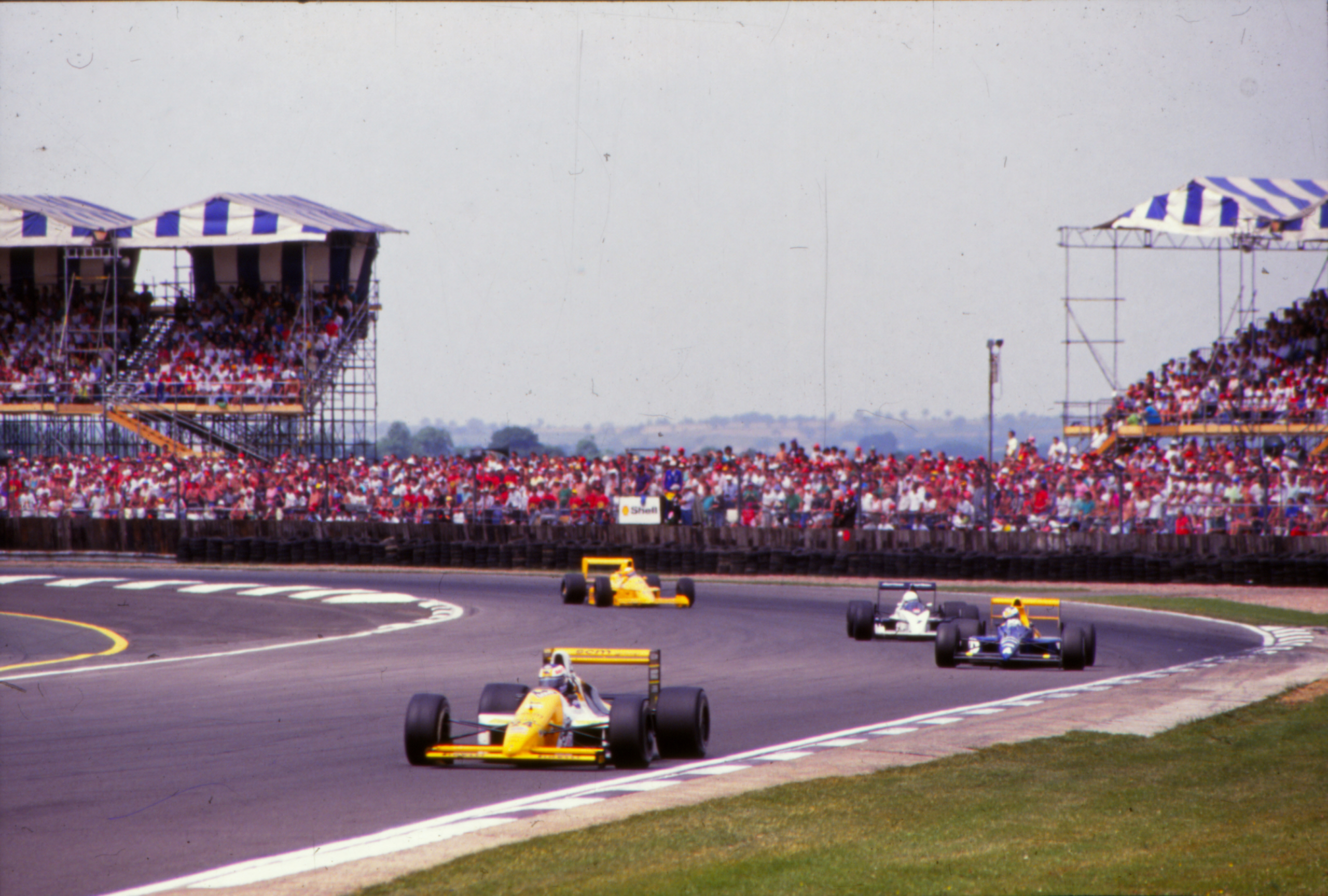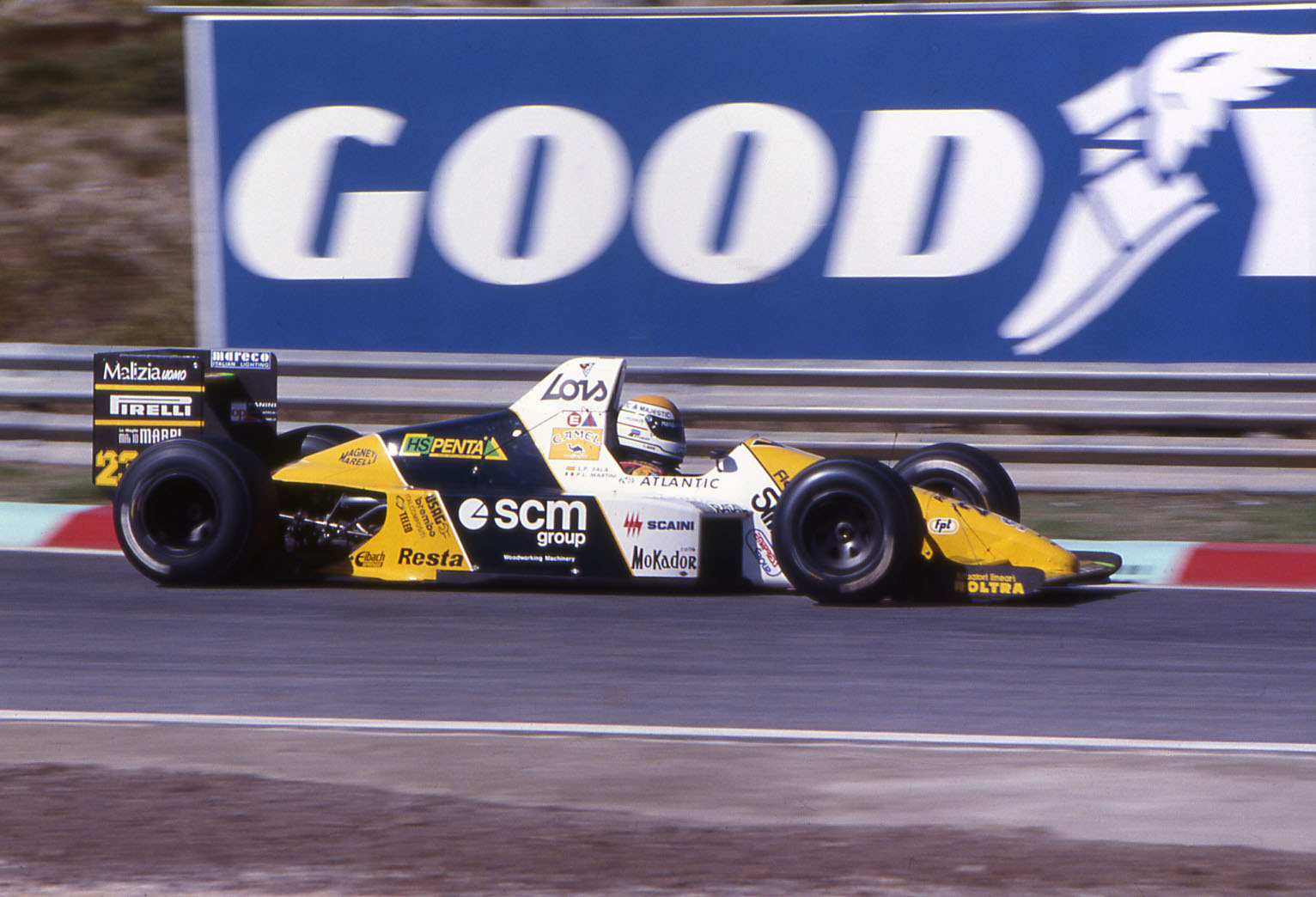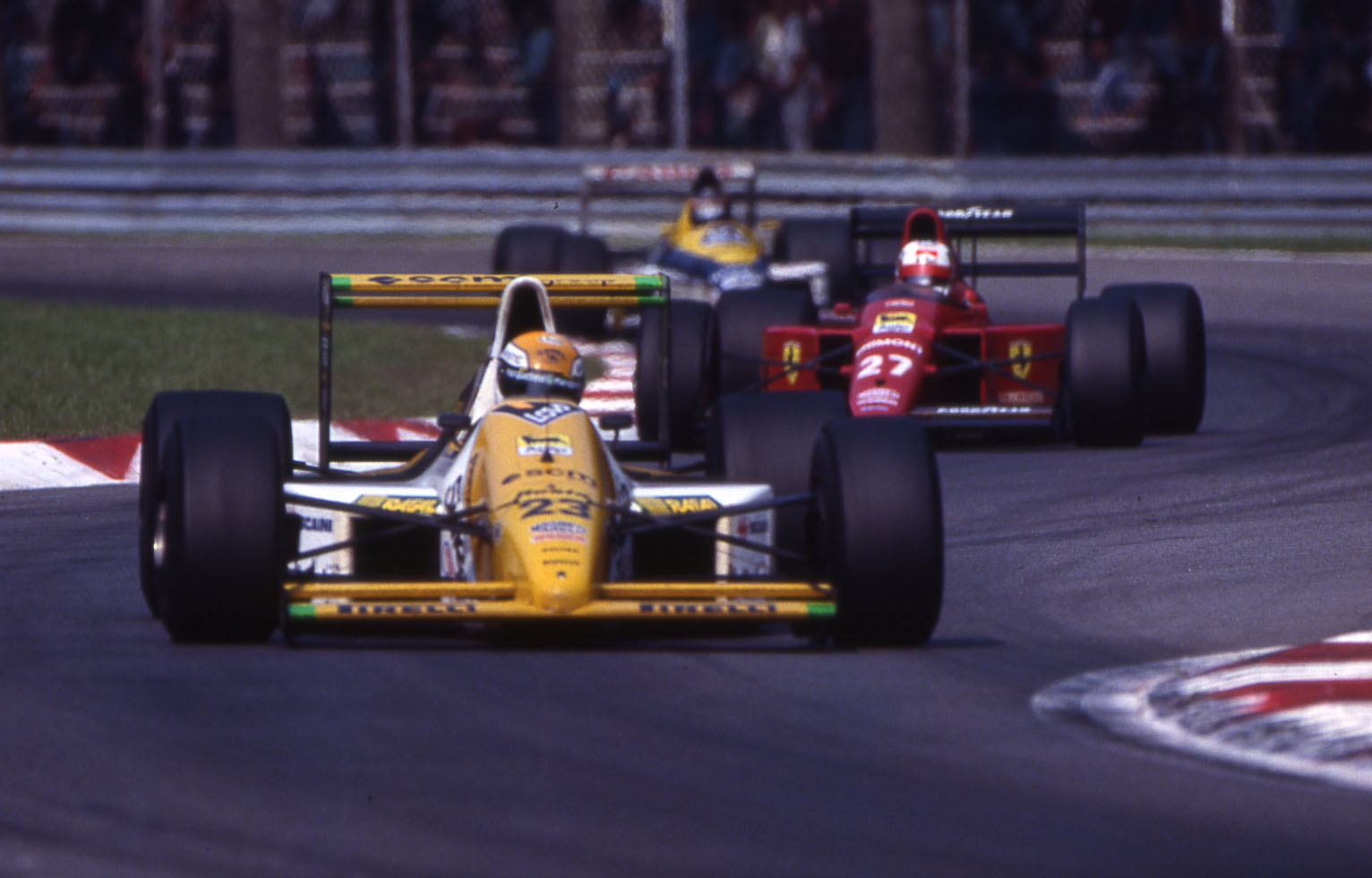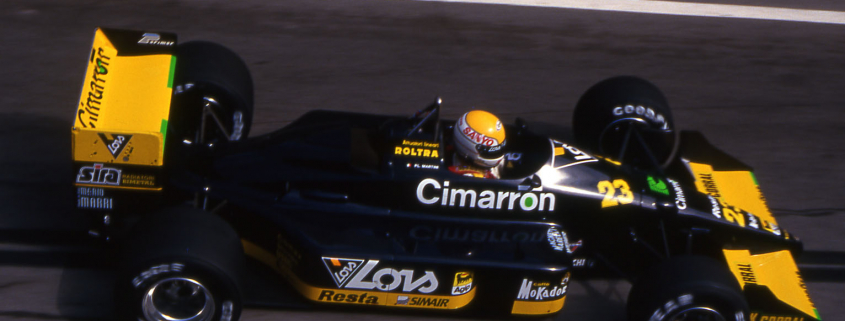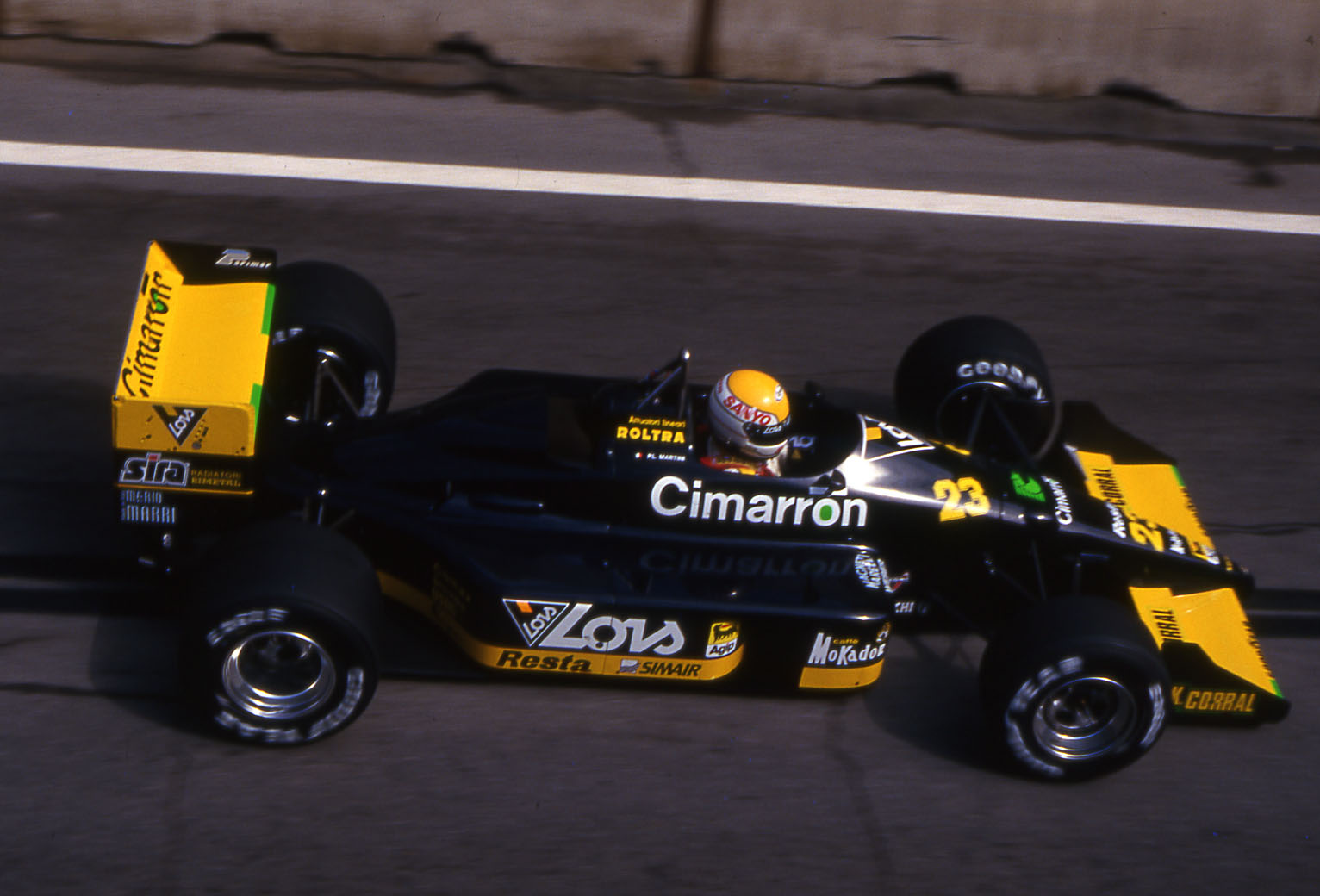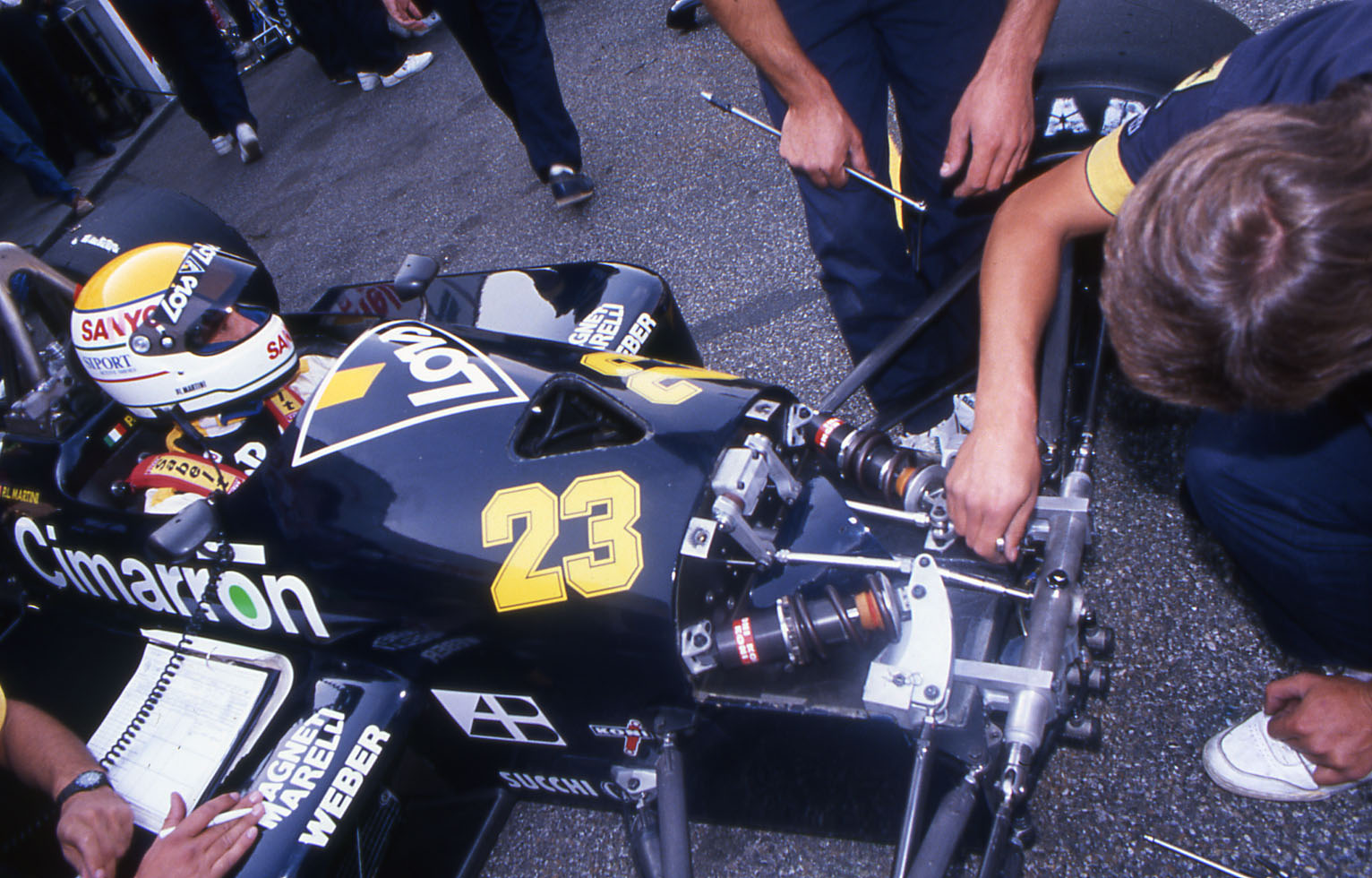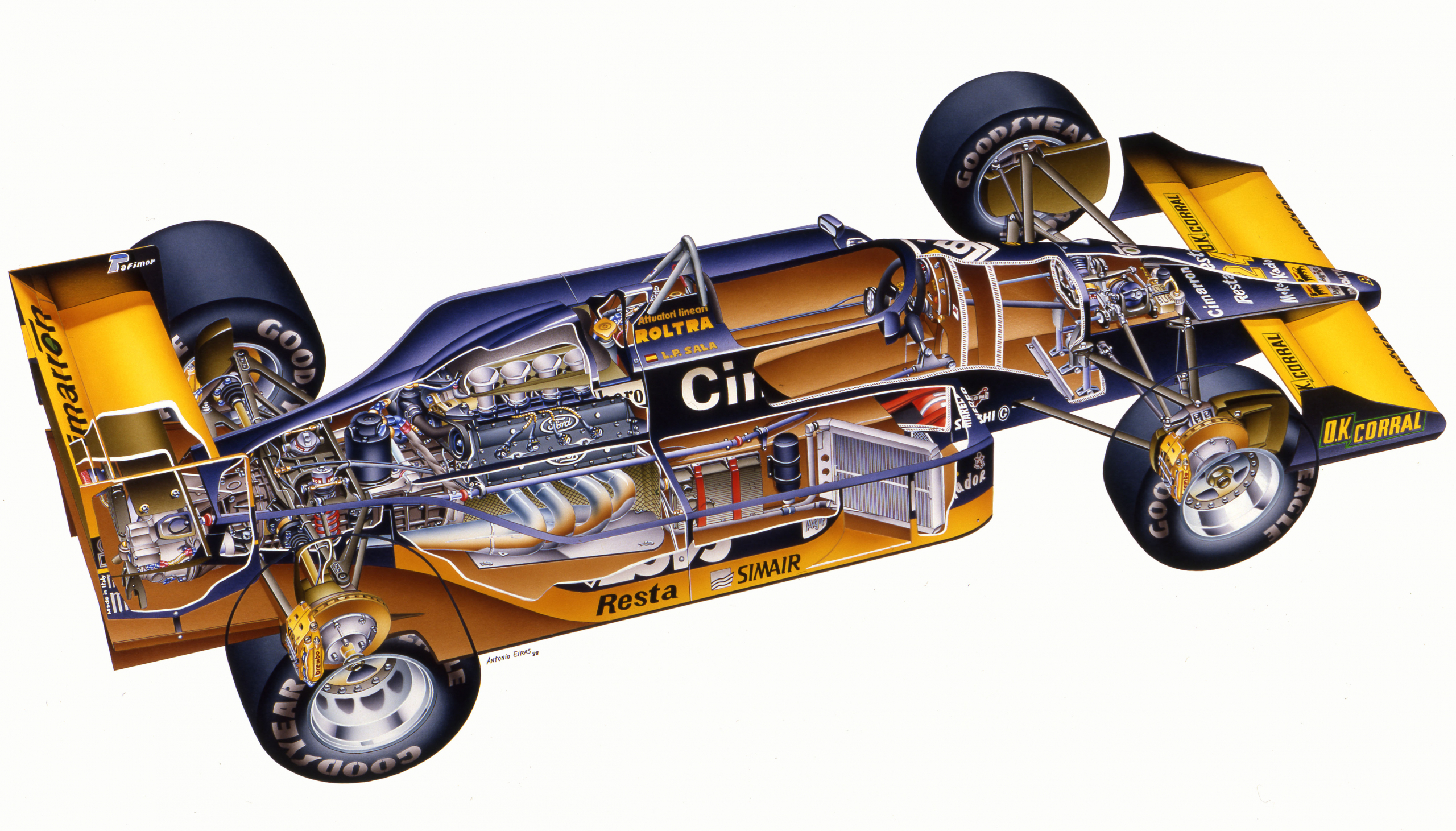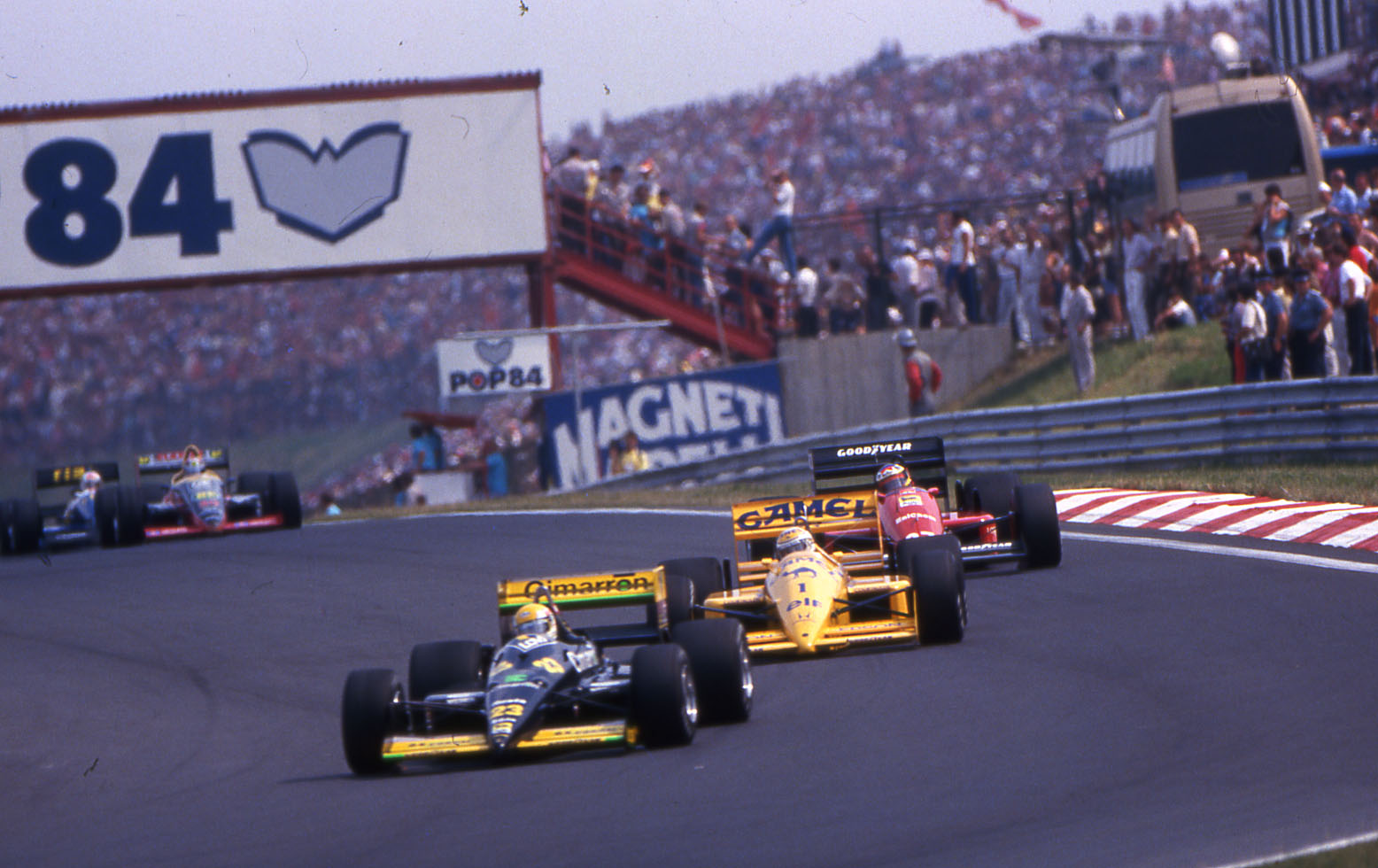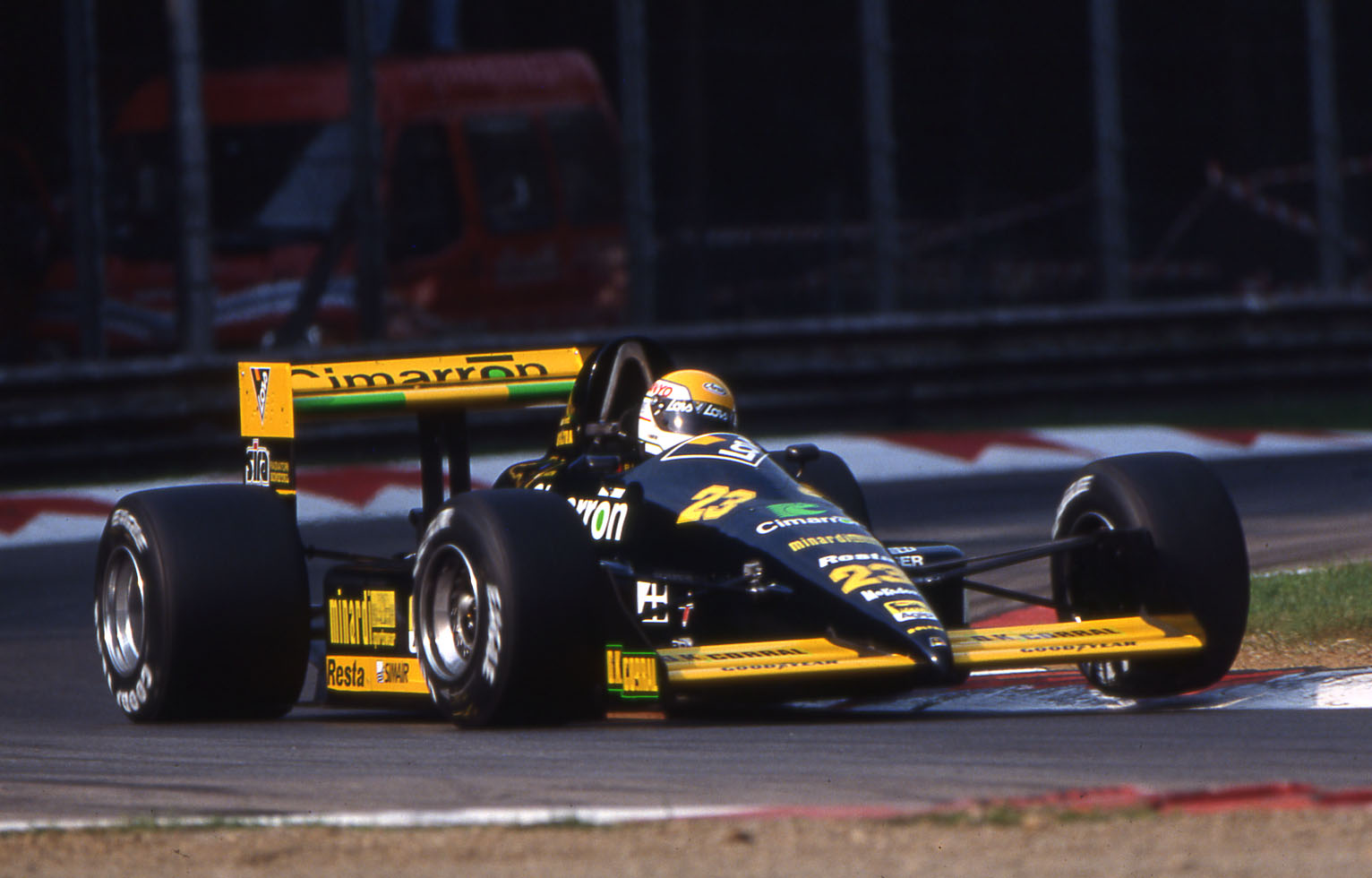MINARDI M189 | THOSE FANTASTIC LAPS IN THE LEAD.THE CAR THAT OPENED A CYCLE
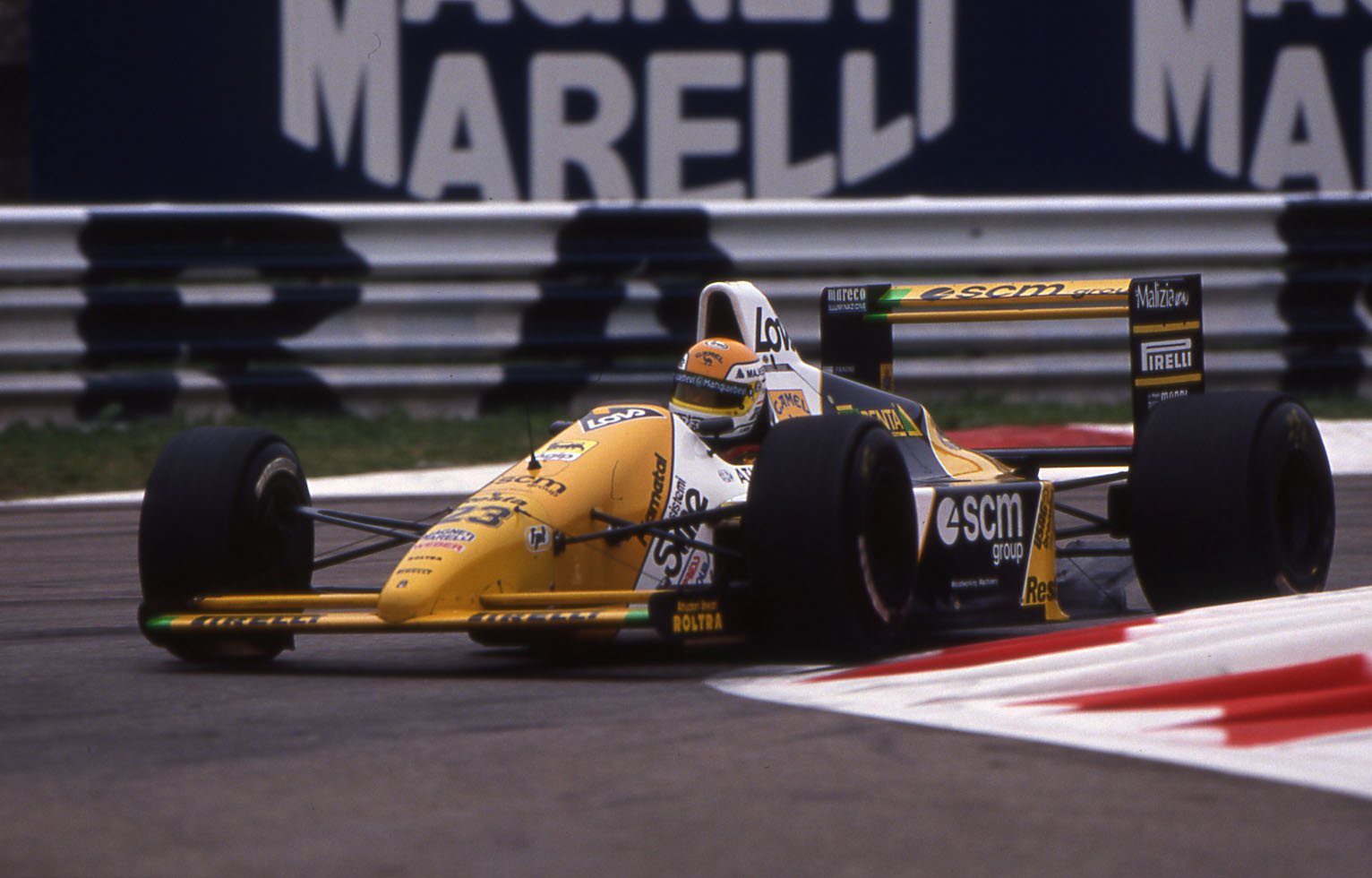 SThe M189 was born from the wake of enthusiasm of the results achieved in the 1988 season. The car made its debut in the fourth round of the world championship on the occasion of the Mexico Grand Prix, taking the place of the M188B.
SThe M189 was born from the wake of enthusiasm of the results achieved in the 1988 season. The car made its debut in the fourth round of the world championship on the occasion of the Mexico Grand Prix, taking the place of the M188B.
Designed by Nigel Cowperthwaite and Tommaso Carletti with Aldo Costa in the role of technical director the car was powered by the 3500cc Ford Cosworth V8. The M189 was the first racing car in which the model of the chassis was not created by hand but worked for the surfaces at the I.De.A. Company in Turin with a 5-axis numerical controlled machine that exploited CAD-CAM technology.
The M189 was entirely designed by CAD and developed in the wind tunnel in Crandfield in England and was also the first racing car to mount rear rocker shock absorbers above the gear box with the hub holders made of welded steel, a solution that was subsequently adopted by everybody.
Particular attention was given to the profile of the wings developed by the former Lotus technician Cowperthwaite. Experiments also began with a high nose cone. The M189 was equipped with the low nose cone but at the same time raised a few centimetres with respect to the bottom of the body. This “step” was the first attempt to favour the air flow in the forward part of the rib, a constructive philosophy that was subsequently adopted by all the teams with the introduction of the high nose cone. The M189’s main weapon was probably constituted by the Pirelli tyres which were particularly perfuming in qualifying but less incisive in the race. They were characterized by a special mix that after the first use allowed the buffing of the surface layer for a second use with performance that was even superior to the first.
The start of the season was not the happiest for Pierluigi Martini and Luis Sala who were forced to seven retirements in as many races with the M189 suffering from overheating problems and the nightmare of prequalifying coming ever closer. The turning point came on July 16 at Silverstone on the occasion of the British Grand Prix where a new arrangement of the heating system was installed and with Martini and Sala who brought the two Minardis into the points, in fifth and sixth places respectively.
GIAN CARLO MINARDI “It was a decisive race for us and the history of the Minardi Team. Those three points allowed the team to not take part from pre-qualifying in the second half of the season which would have meant a great less on the economic level with the loss of the television bonuses and those of the transportation. Piero had a stupendous race even if characterized by a horror start. After three laps he came into the pits because the water temperature was sky high. Taken by the desperation we sent him back onto the track without any intervention on the car and luckily all the parameters fell back into the norm. We never understood what happened but that’s ok”
September 24 at Estoril in Portugal was another incredible date. Martini took Minardi to the lead of a Grand Prix for the first time in its history, controlling the two very fast Williams-Renaults with a stupendous performance and crossing the finishing line in fifth place. To these results Martini added a deserved 6th place in Australia under pouring rain, the 7th and 8th places at Monza and the 9th in Germany and Belgium.
With 6 points to its credit the Minardi team finished in the Top 10 with 20 teams entered for the second consecutive year.
GIAN CARLO MINARDI “The 1989 season was certainly the first of 3/4 seasons in which the Minardi was really fast. 1991 and 1993 come to mind”

